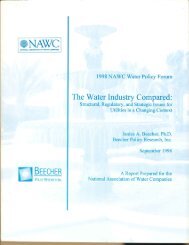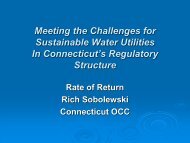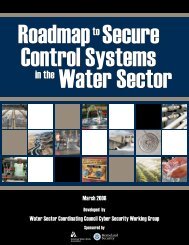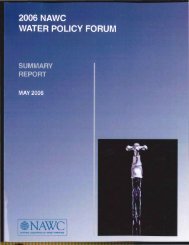CENTER FOR URBAN POLICY AND THE ENVIRONMENT - NAWC
CENTER FOR URBAN POLICY AND THE ENVIRONMENT - NAWC
CENTER FOR URBAN POLICY AND THE ENVIRONMENT - NAWC
Create successful ePaper yourself
Turn your PDF publications into a flip-book with our unique Google optimized e-Paper software.
Indiana University + School of Public & Environmental AffairsCenter for Urban Policy & the Environment• Trends in water demand and pricing, and implications of the rise in real water prices (thatis, increases that exceed the rate of inflation).• The specific cost pressures on the water utility industry.• Issues related to competition in the utility sectors, such as consumer choice and utilityincentives.• Incentives for water utilities to hold costs down and perform efficiently.• Whether the U.S. water industry could achieve significant economies of scale and scopethrough consolidation or regionalization (not necessarily with physical interconnection).• The continuing viability problems of isolated small water systems, and the role of largerutilities addressing these problems.• The limitations of mandatory or unfriendly takeovers of small water systems.• The need for and appropriateness of incentives for consolidation (such as acquisitionincentives, single-tariff pricing, and return-on-equity adjustments).• The role of public policy and regulatory policy with respect to structural change in thewater industry, including consolidation and privatization.• The value of water in comparison to other consumer goods and the importance ofeducating customers about water's value.• How cost allocation and rate design for water usually does not consider health and safetyissues (particularly, fire protection), even though these issues drive water utilityspecifications and costs more than water demand.• Reasons for customer frustration with water utilities and rate increases in light of thecommon view that water should be "free."• The impacts of structural and regulatory change on water customers.• Whether the regulatory compact for the water industry was adequate and whether a newmodel was needed.• The need for flexibility and experimentation in developing regulatory alternatives.iv
















